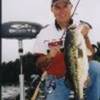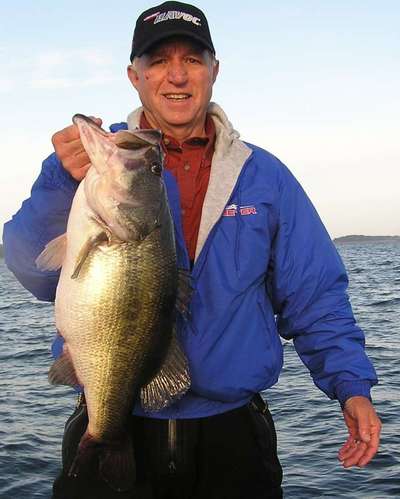Hello, Anglers. One of my most requested how-to fishing techniques in the colder months of the year concerns how/when to fish a jigging spoon so we will use this week's column to talk about how we go about catching fish using this method.
As I have mentioned in past articles I actually prefer winter angling over summer. Some of the reasons being less boating/fishing pressure, absence of 95-100 degree weather and we often catch bigger fish. Last December while spooning we landed a beautiful 10 lbs 13 oz largemouth while fishing the Indian creek area which is on the southern part of the lake. Normally it is not bad outside this month as our winters in Louisiana and central/southeast Texas are normally very mild in comparison to some of our northern states.
WINTER FISHING PATTERNS:
As water temperatures fall into the 50s, I fish a lot of crankbaits, slow-rolling spinnerbaits as well as jigs. In addition, on the mid and southern portions of Toledo, the water is normally very clear which lends itself beautifully to a lot of vertical presentations with jigging spoons and drop shot rigs. I have been a fan of jigging spoons for 20-25 years and have used them on south Toledo to catch thousands of bass in cold weather. For most situations, I use a custom made spoon which is about 5/8 of an ounce and attach a #4 Daiichi's Death Trap treble hook. This is a very high carbon hook and is super sharp which is vital in jigging a spoon.
My spoons are made by Retired Army Col. Ralph Moffett, who lives on south Toledo, is a recent convert to Daiichi's Death Trap hooks. Col. Moffett is the best spoon fisherman I have ever encountered and there is no way of knowing the numbers of bass he has taken on this method. A jigging spoon is nothing but a slab of lead with a treble hook attached. However, when this is lowered into the depths of a deep, clear lake and bounced off the bottom, it can become a very effective tool for catching fish. I catch most of my spoon fish in depths of 25 to 40 feet. I have caught them as deep as 55 feet but 33-38 feet is where I fish most of the them.
WHEN TO SPOON FEED:
As far as time of the year, I like from mid- November through January as prime months but a spoon will catch bass 12 months out of the year but different presentations are needed in warmer months. Let's consider only cold water patterns in this report. Ideal jigging spoon days are usually just the opposite of traditional bass patterns. Best spoon days are often just behind (first couple of days) a cold front with bright skies and high barometric pressure. This puts lots of bait fish (shad) and bass on the bottom. If bass are not holding on the bottom, they are very difficult to 'pattern' using this method. After a cold front has past and weather starts to moderate after a few days, the jigging spoon is normally not as effective. When this happens, bass will often come up off the bottom and suspend making them much more difficult to catch. So, I like a bright, high pressure day.
JIGGING SPOON TOOL TIME:
I have personally tried numerous rod/reel/line combinations for deep water spooning and feel my current set-up is the most effective I have used to date. It includes Berkley's Trilene 100% Fluorocarbon line in 15/17 pound test which is transparent, has great sensitivity to feel subtle strikes, possesses super knot strength and is very resistant to abrasions. The rod selection in spooning is vitally important and my spoon is hanging on Fenwick's Techna AV 7 foot baitcast with medium fast action. This rod helps me to feel everything my spoon is doing and has quick response at hook set with plenty of backbone to fight a big fish. It also has enough flex to keep a big bass from pulling off at the boat. My experience is that a heavy action rod is not ideal for spoon fishing as it has no give/flex when a big fish makes a run close to the boat.
As far as reels, I am now using the newly remodeled Abu Garcia Revo SX which weighs in at about 6 ozs. The quality of these reels leaves little to be said. One thing that is done in vertical jigging is to engage the reel and allow the spoon to free-fall to the bottom. I know of no reel on the market which spins more freely when engaged than the Abu Garcia Revo Series. A final thing about vertical jigging a spoon is that you catch numerous species of fish including largemouth bass, spotted bass, yellow bass, white bass, striper, crappie, bream as well as an occasional big catfish. Sounds like a buffet, huh? If you want a hands-on/on the lake demonstration, please give us a call. Merry Christmas!
AUTHOR INFO: Joe Joslin is a syndicated outdoor columnist, tournament angler and pro guide on Toledo and Sam Rayburn. Contact him at 337-463-3848 or e-mail at joejoslinoutdoors@yahoo.com or website www.joejoslinoutdoors.com.


